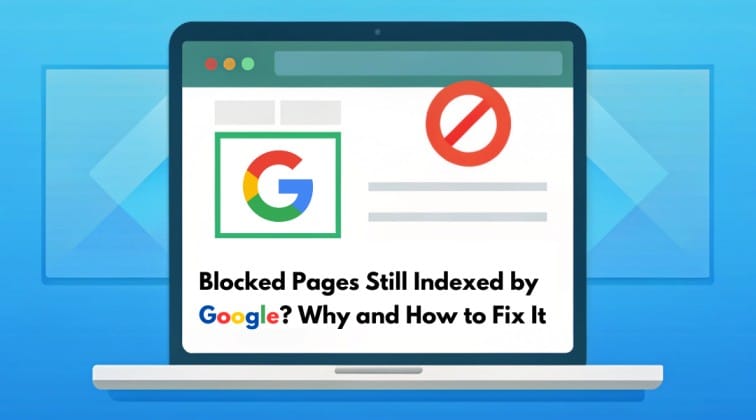What is page indexing?
Page indexing is the process by which search engines store and organize web pages in their database after crawling them. When a page is indexed, it becomes eligible to appear in search engine results for relevant queries. Without indexing, a web page cannot be found in search results, even if it has valuable content. Indexing is crucial for improving a website’s visibility and ranking in search engines, making it an essential part of SEO. Additionally, utilizing data tracking services can help monitor indexing status and optimize your website’s performance further, ensuring your content reaches the right audience effectively.
How to fix page indexing issues?
To fix page indexing issues
- Verify Robots.txt: Make sure that no critical pages are being blocked by your robots.txt file. Remove any Disallow directives that affect key URLs.
- Review Meta Tags: Check for noindex meta tags on your pages. Remove them if you want those pages to be indexed.
- Submit an XML Sitemap: Create and submit an updated XML sitemap to search engines through tools like Google Search Console. This helps them discover all significant URLs.
- Use Google Search Console: Utilize the URL Inspection tool to check the indexing status of your pages. If a page is not indexed, request manual indexing.
- Fix Crawl Errors: Address any errors reported in the Coverage section of Google Search Console, such as “Crawled but not indexed” or “Redirect error.”
- Improve Content Quality: Ensure that your pages have high-quality, relevant content. Thin or duplicate content may not be indexed.
- Increase Internal Linking: Link to important pages from other parts of your site to help crawlers find and index them more easily.
Robots.txt blocking, yet the page is still indexed
In our unique case, where blocking crawl access is more crucial than deindexing, we should temporarily unblock the query parameter URLs in the robots.txt file, add a noindex meta tag to prevent indexing, and monitor for deindexing. Once confirmed, we can reapply the block in robots.txt. Additionally, fixing internal linking to reduce references to these URLs and adding nofollow tags to relevant links can further minimize the chances of them being crawled. This strategic approach will help us effectively manage the indexing and crawling of these URLs.
Blocked Pages Still Indexed by Google Chrome: What You Need to Know
Encountering blocked pages still indexed by Google can be a perplexing issue for website owners. Even when you block specific URLs via the robots.txt file, Google may still index these pages due to internal links or other factors. This situation can lead to confusion and potential SEO challenges.
Reasons for Indexing Blocked Pages
- Internal Links: If other pages on your site link to the blocked pages, Google may discover and index them despite the crawling restrictions.
- Historical Data: Google may retain historical data about a page, keeping it indexed even after it has been blocked.
Solutions to Deindex Blocked Pages
- Implement Noindex Tags: Temporarily unblock the URLs, add a noindex meta tag to signal to Google that these pages should not be indexed, and monitor for changes.
- Fix Internal Linking: Remove or alter internal links pointing to these blocked pages to prevent Google from discovering them.
- Use Nofollow Tags: Add nofollow attributes to internal links that direct to the blocked pages, reducing the likelihood of them being crawled.
Understanding the Problem:
Blocked pages are those you intend to keep out of search engine indexes, either because they contain sensitive information, duplicate content, or are simply not relevant for public viewing. You might use various methods to block these pages, such as robots.txt files, noindex meta tags, or password protection. However, even with these measures, you might find that some blocked pages are still indexed by Google. To address this issue effectively, consider integrating a comprehensive search engine optimization service that can help you manage indexing and ensure your website remains optimized for search visibility while keeping unwanted content out of search results.
Why Blocked Pages Still Get Indexed:
Incorrect Implementation of Robots.txt
Robots.txt is a file placed in the root directory of your website that instructs search engine crawlers which pages or sections they should avoid. However, if this file is not correctly configured, search engines may still crawl and index the pages.
Noindex Tags Not Recognized
The noindex meta tag is used to tell search engines not to index a page. If this tag is placed incorrectly or not implemented properly, search engines may ignore it.
Cached Versions
Google might still index the cached version of a page even if it has been blocked or removed. This can occur because search engines periodically cache pages, and updates to blocked pages may take some time to reflect.
Broken or Misconfigured Redirects
Sometimes, redirects to blocked pages can lead to indexing issues. If a redirect is incorrectly set up, it might cause search engines to index the blocked content inadvertently.
External Links
Pages that are blocked but still have external links pointing to them can be discovered and indexed by search engines. This is because search engines follow links from other sites, which can lead to indexing of blocked pages.
Errors in Blocking Rules
If there are errors in the blocking rules or conflicting directives in your robots.txt file or meta tags, search engines may not follow them as intended.
How to Fix Indexed Blocked Pages:
Review and Update Robots.txt File
Ensure that your robots.txt file is correctly configured. Check for syntax errors and make sure that the paths you want to block are correctly specified. Use Google’s Robots.txt Tester tool in Search Console to validate your file.
Verify Noindex Tags
Confirm that the noindex meta tag is correctly implemented in the <head> section of your HTML. The tag should look like this:
<meta name=”robots” content=”noindex”>
Ensure that this tag is not being overridden by other directives or conflicting tags.
Remove Cached Versions
Use the URL Removal Tool in Google Search Console to request the removal of cached versions of blocked pages. This tool allows you to temporarily hide URLs from Google’s search results.
- Go to Google Search Console
- Navigate to the “Removals” section
- Enter the URL you want to remove and submit the request
Fix Redirects
Review and correct any redirects leading to blocked pages. Ensure that redirects point to relevant and allowed pages to prevent unnecessary indexing.
Check for External Links
Identify external sites linking to your blocked pages using tools like Google Search Console or third-party backlink checkers. Reach out to these sites to request the removal of the links, or use the Disavow Tool in Google Search Console to tell Google to ignore these links.
Update and Resubmit Your Sitemap
Ensure that your XML sitemap is up-to-date and does not include URLs of blocked pages. Resubmit your sitemap through Google Search Console to help Google crawl and index only the pages you want.
Monitor and Audit Regularly
Regularly audit your site’s indexation status using Google Search Console and other SEO tools. This helps in quickly identifying and addressing any indexing issues that might arise.
Conclusion
Managing blocked pages and ensuring they are not indexed by Google requires careful attention to detail and regular maintenance. By understanding why blocked pages might still appear in search results and implementing the appropriate fixes, you can maintain better control over your website’s visibility and improve your SEO strategy. To achieve optimal results, consider partnering with the best SEO company to help you navigate these challenges effectively and enhance your site’s performance in search engines.
If you have any questions or need assistance with your website’s indexing issues, feel free to reach out. Staying proactive with your SEO practices will help ensure that your website remains optimized and effectively managed.




